Profiled sheet, it is corrugated - this is roofing material made from ...
|
|
More and more people are thinking about installing stretch ceilings in the apartment. AND... |
If necessary, in the location of cracks, gluing a certain kind of materials or ... |
How to choose a parquet varnish
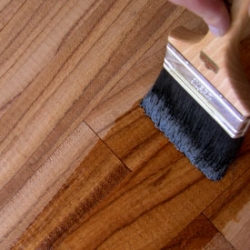
The parquet board differs from other types of flooring in that it requires thorough care. Without varnish or oil, the parquet will not last even a year, therefore, to protect wood, these compositions must be used without fail. And although the assortment of funds for processing the parquet is quite large, the varnish is still, like a hundred years ago, is in high demand. Still would! He looks great and copes with his duty perfectly. But how to choose a parquet varnish? Let's find out!
Content:
- Ground varnishes
- Water -soluble varnishes
- Ain -water polyurethane varnishes
- Alkyd varnishes
- Formaldehyde varnishes
Parquet varnish selection criteria
Most likely, you will have to determine the type of varnish for parquet, and the master who will engage in the installation of the parquet board and its finish processing. But still, the last word should be behind the owner of the apartment, so it will be better if you show proper awareness in matters of final finish.

The most important factor when choosing a varnish composition is the functional purpose of the room and the estimated load on the parquet. In the event that a massive accumulation of people is not expected in the room and there will be only 2-3 people to use it, and they will wear soft homemade slippers on their feet, then you can stop your choice of parquet polishing with a minimum load on them. But for the kitchen and the corridor, it is better to choose such a varnish that will be a maximum to protect the parquet not only from loads, but also from all kinds of pollution.
And what varnish to choose for a parquet laid down, for example, in a bar or restaurant? Here the attendance is high, which means that the coating should be durable and reliable. In this case, it is worth using either oil impregnations or special water -repellent compositions, since only in this way it will be possible to save the parquet bar in a decent state. Such a coating can be regularly updated by returning the floor to the former beauty, but you will have to tinker with varnish.
Types of varnishes
Lacques are distinguished by the following parameters:
- technological properties: fluidity, viscosity, application method;
- chemical composition: primer, water-soluble, alkyd, urethic, acid-adverse, polyurethane on anhydrous basis, based on formaldehyde resins;
- appearance: transparent or painting wood in a certain color;
- degree of shine: glossy, semi-gloss, matte, semi-water, silky-dental;
- resistance to mechanical stress, light, external environment and service life.
Ground varnishes
Grounding lugs include varnishes that are applied to the finish coating and enhance its adhesion to the board. Their use is justified primarily by the ability to improve the quality of the upper layers of varnish, but in addition to this, primer varnishes must be used in the following cases:
- when is the goal of getting a perfectly even shade;
- when it is necessary to reduce the adhesive effect of varnish in the side joints of the dies;
- when it is necessary to insulate the natural oils of exotic wood;
- when there is a danger of getting a water residue on the surface of the dies.
Before applying a primer varnish to the floor surface, make sure that it is compatible with the finish coating, otherwise a very unpleasant embarrassment may occur, which will be quite difficult to fix: the floor surface will simply become spotted, and to get rid of the spots will have to completely remove all layers of varnish. So under water varnish, a water primer is applied to their components are compatible with each other, which means that nothing threatens your parking.
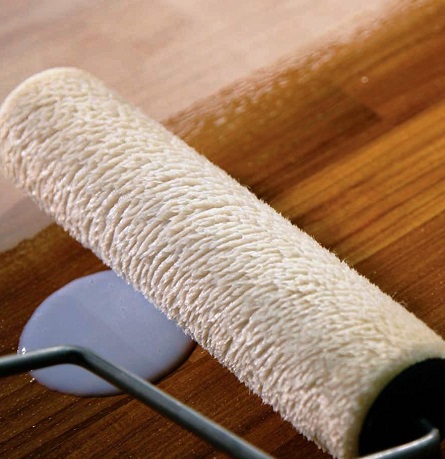
Ground varnishes have a wonderful property: they reduce the consumption of the finish coating due to the fact that they reduce its penetrating ability.
The primers dry for long, because they include solvents that quickly evaporate from the floor surface. The time of complete drying is from 15 minutes to 3 hours.
To achieve the maximum result, it is advisable to use the primer and the finish varnish of one manufacturer. This is primarily associated with varying degrees of cleaning of compositions from different impurities and if you decide, for example, to apply domestic soil under the import coating, you may not be surprised if the final result does not impress you.
Water -soluble varnishes
So, the primer was applied, now it remains to complete the begun. If you think about which varnish to cover the parquet, then one of the most optimal in the price and quality of options will be water varnish. This composition consists of the smallest particles of the solvent, emulsifiers and water and due to the fact that it is the basis of water, it dries a little differently than its collectors: after applying the layer of varnish, water first begins to evaporate, not a solvent. The latter evaporates much slower than the first, so the concentration of the solvent in water dispersion gradually increases. And when the threshold value is overcome, the solvent begins to destroy drops of the binder and evaporates completely. As a result, the lacquer film dries and becomes as strong and solid as possible.
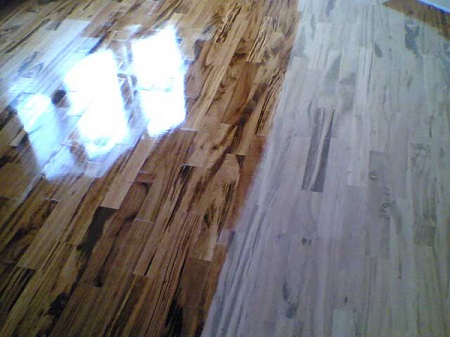
According to the content of solvents, water varnishes are divided into three categories: not containing solvents containing solvents within 5% and containing solvents within 15%. Regardless of belonging to the category, water -soluble varnishes have excellent adhesive characteristics when applying them to wooden surfaces. Thus, they are ideal for parquet and parquet boards. However, it should be noted that such a composition penetrates quite well into the gap between the dies, which can lead to the appearance of unwanted creaks. In order to partially prevent such a nuisance, you can pre -primer the floor surface with a water primer, although you still cannot completely save yourself from fears for silence in the room. Unfortunately, water varnishes have several more disadvantages:
- Low wear resistance. This property is attributed to classical water -soluble varnishes, which contain only water, emulsifiers and solvents. But if you add special additives to such a solution to increase the life of varnish, then it will turn into an excellent protective tool. True, in this case one requirement appears: such varnish can only be applied if the humidity in the room is at least 50%, and it is not always possible to achieve such indicators. In particular, in the winter period of time without air humidifiers, to catch up with humidity to 50% is generally impossible.
- Water varnishes are very demanding on the choice of application means. They do not like brushes, lips, tampons, spatulas. Only the roller remains, but in this case you will have to spend more than one hour in the store before you can choose the right tool.
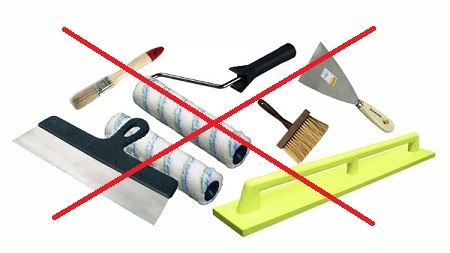
Advantages Water varnishes:
- Due to the water base, the varnish does not have a pronounced smell, although it does not smell like that it does not smell at all, of course! But on the other hand, it is possible to cover the parquet with water varnish even when there are people who do not participate in the process of flooring in the room.
- Water varnishes are not flammables and that is why they can be used in those rooms where, according to the conditions of construction, the use of varnishes based on solvents is impossible due to the danger of an explosion or fire.
It is very important to make sure what kind of varnish you have acquired, because if it is a professional tool, then it can be applied without a primer, and if the varnishes you have chosen has nothing to do with professionals, then before you cover your parquet, you First you have to tinker with the primer.
Ain -water polyurethane varnishes
This type of parquet varnishes is ideal for rooms with increased cross -country ability. They are extremely strong and have high adhesive properties to wood.
By the number of components that are part of polyurethanelessless varnishes, they are:
- One-component (PUR-varnishes)
- Two-component (DD-varnishes)
The composition of both of them may include various aromatic arrangements that give the solutions, if not very pleasant, then a less nasty aroma than ordinary varnishes. The foundation of varnishes can also be different: acrylic, uoret or solvent.

Naturally, when you choose varnish and think about which varnish for the parquet is better than water or anhydrous, any argument in favor of one or the other can become decisive. So, anhydrous polyurethane varnish dries faster than a water -soluble, because there is no water in its composition. The drying process begins with the evaporation of the solvents, and at the next stage, the varnish of the varnish occurs due to the chemical reaction of polypoinism flowing inside the composition.
When applying varnish to parquet and drying it, it is necessary to protect the lacquer film from any contact with water. Even if the moisture content of the wood is higher than the norm (the norm means an indicator of humidity equal to 7-8%), then the result of the work may not please you: air bubbles are formed on the floor surface or even foaming of varnish, which will ultimately lead to the appearance of visual defects.
Advantages Ain -water varnishes:
- Do not require soils;
- Elastic;
- Not capricious to the microclimate of the premises;
- They are not afraid of moisture (meaning during operation).
You can even say with confidence that anhydrous varnish is the best parquet varnish, because it can be perfectly used even in those rooms where a lot of people gather daily.
Oil resin -based varnishes (alkyd)
The main component of such varnishes is alkyd resins that are obtained from natural raw materials. It is due to the fact that the varnish contains wood, linseed and other oils that the product can penetrate rather deeply into the structure of wood.
In addition to the oils, you can find other components in the varnish, such as a White Spirit, the concentration of which can be both high and low. The last type of varnishes is less toxic.
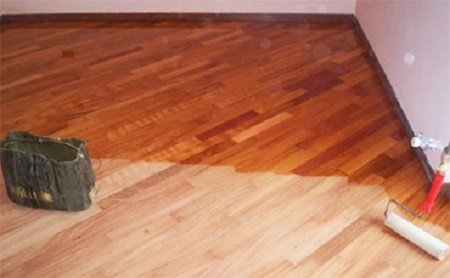
Advantagesalkyd varnishes:
- enhance the natural beauty of wood, favorably emphasizing its structure
- they do not have adhesive properties, which means that when applying such a varnish to the parquet, he does not start in the cracks between the dies
- perfectly tolerates mechanical loads, temperature changes and changes indoor moisture
Flaws Alkyd varnishes:
- during drying, they are very sensitive to high air temperatures, so it is necessary to artificially lower the degree, opening the windows and doors
- when applying varnish, you need to monitor the thickness of the layer. If you are carried away, you did not notice how you applied too much varnish, then after drying you can notice on the surface of the wrinkle
- alkyd varnishes have very low wear resistance, you can even say that they do not possess it at all, although they can be successfully used to cover furniture.
And if you think about which varnish is better to cover the parquet, then immediately mention the option with alkyd varnish, it is definitely not suitable for the implementation of your fantasies.
Acid curing varnishes (formaldehyde)
This type of varnishes belongs to the category of the most persistent and if you decide to build not a house, but a fortress, then such a varnish will definitely suit you.
The composition of the varnish includes formaldehyde resins. Surely you are now in a panic, because it has long been known that this compound is dangerous and harmful to health. However, formaldehydes evaporate very quickly from the surface of the floor and at the same time do not leave the slightest hint of their stay in the varnish.
Advantages formaldehyde varnishes:
- good clutch with wood
- resistance to moisture and temperature levels in the room
- applied by any painting tool
- can be used without preliminary primer
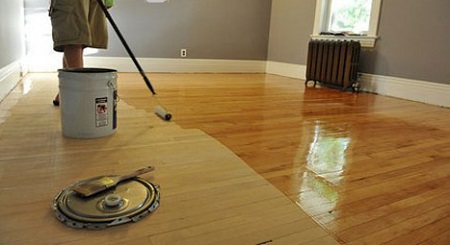
Flaws formaldehyde varnishes:
- have a pronounced smell, so you will have to work with open windows and in the respirator
- the side walls of the dies are strongly glued.
Based on all of the above, we can draw the following conclusion: if you still puzzle over which varnish for the parquet is better, then you do it in vain, because for each individual case the use of different types of varnish coatings will be appropriate. For the kitchen and the corridor, formaldehyde, water -soluble for the bedroom, and there will be enough alkyd for the living room.

Useful information, thanks!
Useful information, thanks!
Good afternoon, bought a parquet
Good afternoon, bought Escaro Parquet varnish https://aura.if.ua/shop/product/eskaro-parketilakk- 60
After applying it, the parquet received a very glossy effect. Please tell me whether it is possible or something to remove this shine?
http://furnika.com.ua/
http://furnika.com.ua/